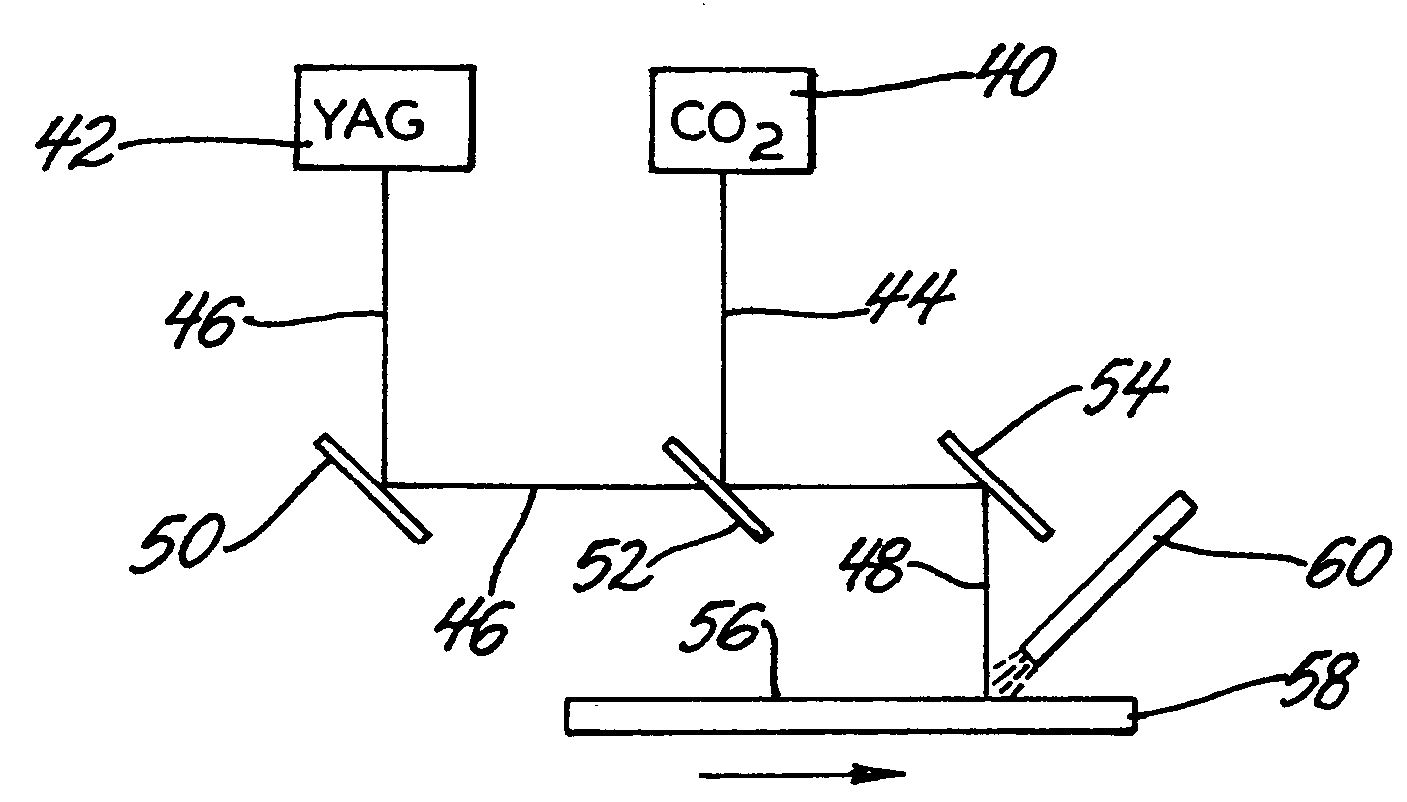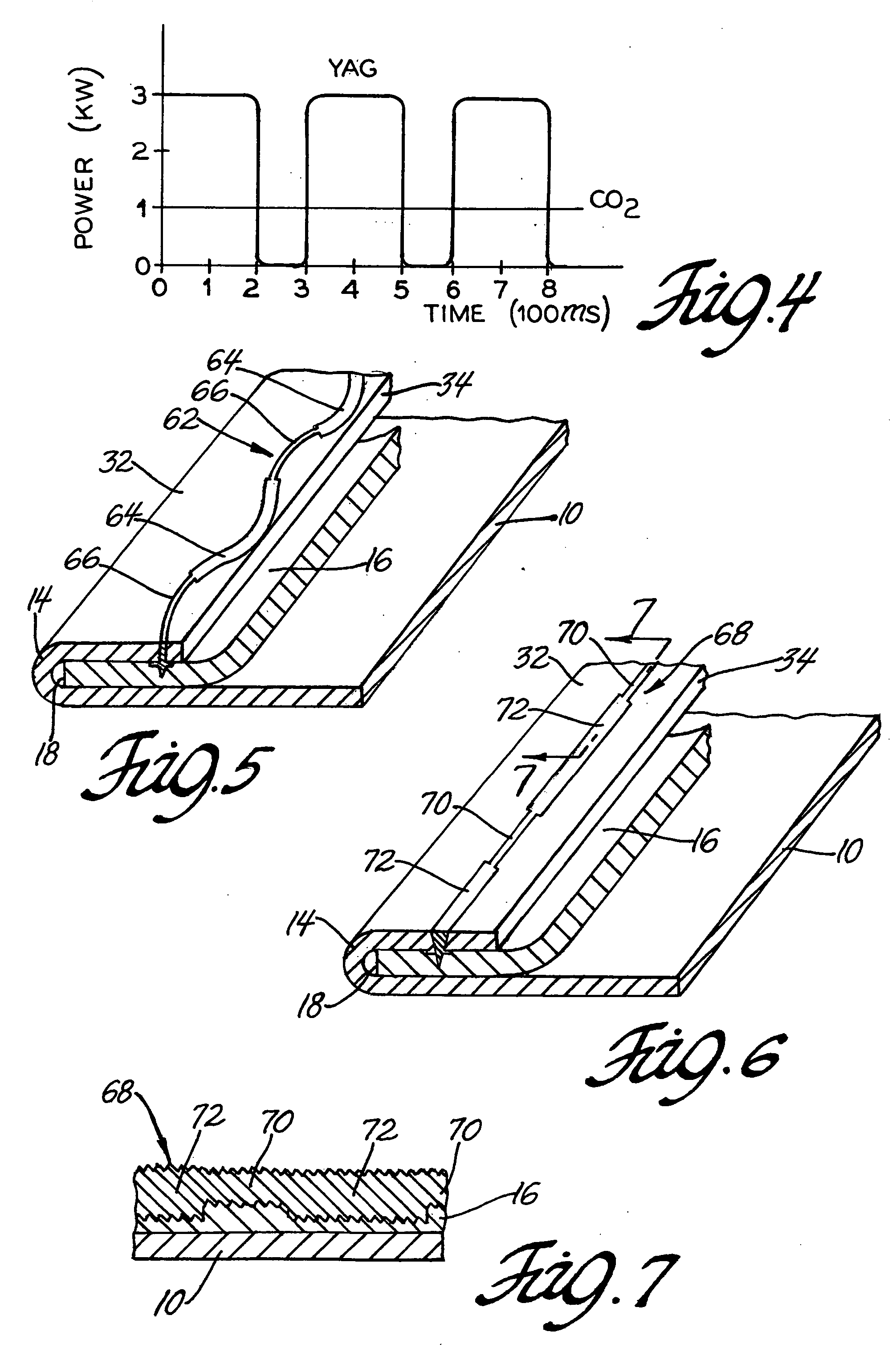Compound laser beam welding
a laser beam and compound technology, applied in welding/soldering/cutting articles, metal working devices, manufacturing tools, etc., can solve the problems embrittlement or hot cracking along weld joints, and the problem of hot cracking of weld nuggets remains. , to achieve the effect of reducing shrinkage stresses and reducing shrinkage stresses in the welded hem assembly
- Summary
- Abstract
- Description
- Claims
- Application Information
AI Technical Summary
Benefits of technology
Problems solved by technology
Method used
Image
Examples
Embodiment Construction
[0018] The coherent and focused energy of laser beams is used in metal machining, heat treatment and welding operations. In the metal welding applications, lasers are often used in welding two or more sheet metal layers. For example, flanges of metal sheets are joined by using a laser beam to melt through the thickness of the upper flange and into the lower flange of an assembly. The laser beam is usually moved relative to the workpiece to trace a linear path, straight or non-straight, along the flange area, or other area to be joined, and after the laser beam has moved along its path, molten metal solidifies by heat loss to the adjacent sheet material to form a weld nugget. There is always a desire to form laser welds faster, with greater accuracy and better process control.
[0019] There is also a desire to apply laser welding technology to joining light weight sheet metal parts, such as automotive vehicle body panels. But when laser welding is attempted on aluminum alloy panels it...
PUM
| Property | Measurement | Unit |
|---|---|---|
| thickness | aaaaa | aaaaa |
| power | aaaaa | aaaaa |
| frequency | aaaaa | aaaaa |
Abstract
Description
Claims
Application Information
 Login to View More
Login to View More - R&D
- Intellectual Property
- Life Sciences
- Materials
- Tech Scout
- Unparalleled Data Quality
- Higher Quality Content
- 60% Fewer Hallucinations
Browse by: Latest US Patents, China's latest patents, Technical Efficacy Thesaurus, Application Domain, Technology Topic, Popular Technical Reports.
© 2025 PatSnap. All rights reserved.Legal|Privacy policy|Modern Slavery Act Transparency Statement|Sitemap|About US| Contact US: help@patsnap.com



